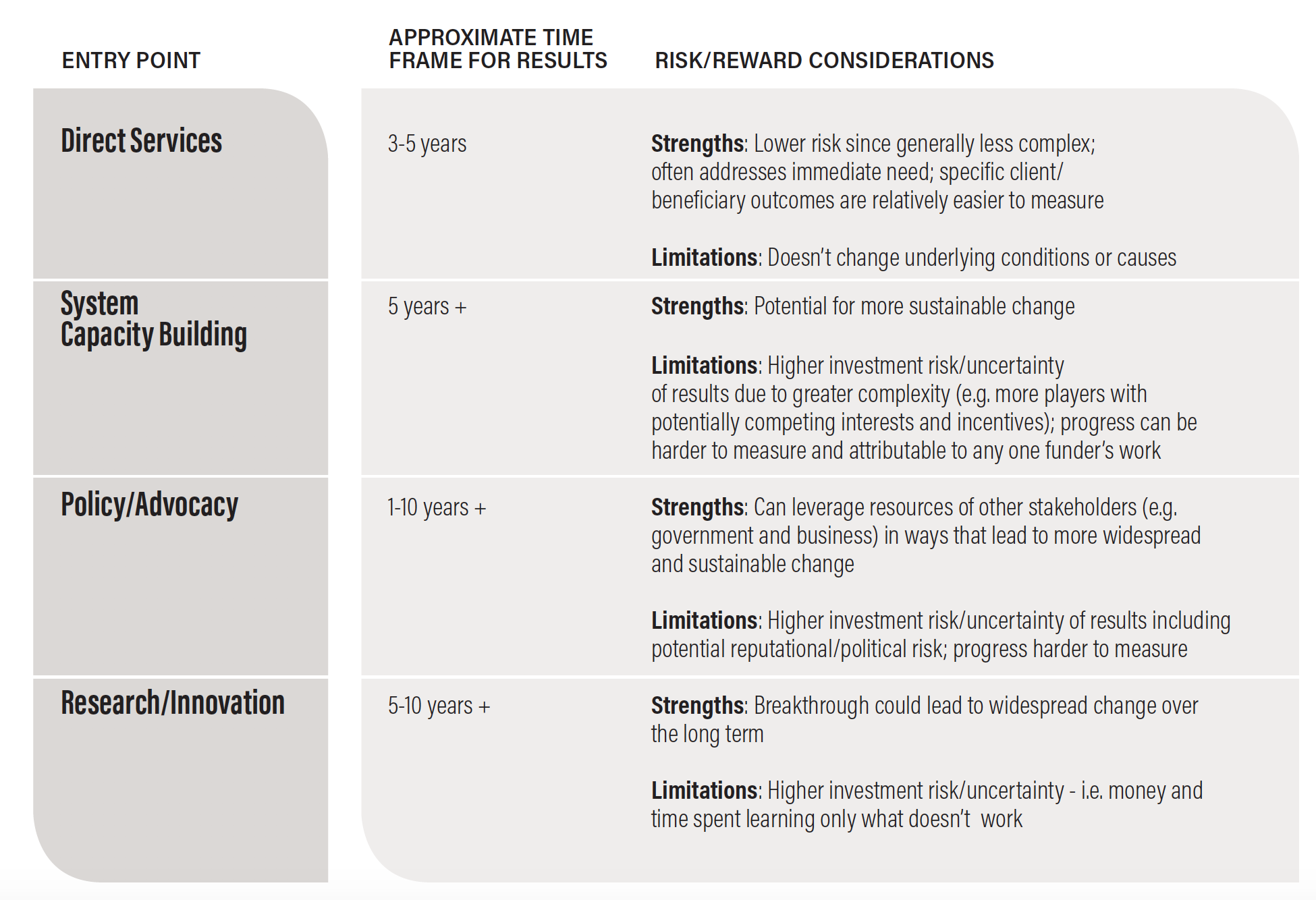Philanthropic support takes many forms. It can fund nonprofit programs that provide direct services to those in need; increase the capacity of systems so that programs can function more effectively and efficiently; fund research that underpins these programs; and support policy initiatives that are needed to sustain them. It can also back innovation with the potential for game-changing progress.
At CHIP, we have a broad view of how philanthropy can help. Across the many social impact areas our team has analyzed, we find that philanthropic support typically falls within one of four categories of ways that philanthropy can help. Similar to financial investment asset classes, these categories often reflect different levels of risk, timeframes for results, and social impact return profiles. All have potential for high impact. However, some funders may lack the expertise, patience, risk-tolerance, networks, or personal comfort level to invest in all categories. In addition, criteria for selecting ways to help and types of evidence for assessing progress differ among these categories. Throughout this guide, we will provide specific examples of ways to help within each of these categories, matched to each of the five strategies that emerged from our applied research.
A Broad View of How Philanthropy Can Help
Across the many social impact areas CHIP has analyzed, philanthropic support typically falls within one of four categories of ways to help. Here we provide general guidelines related to timeframe to impact, associated risks and rewards, measurement of results, and conditions for success. While not hard and fast rules, funders have found these guidelines helpful in choosing opportunities to pursue and in recognizing the tradeoffs in those choices. Nonprofits have also found these guidelines helpful in prioritizing activities and managing funder expectations.

